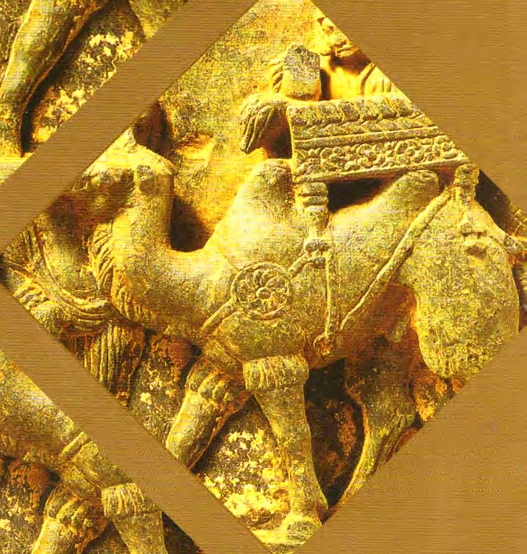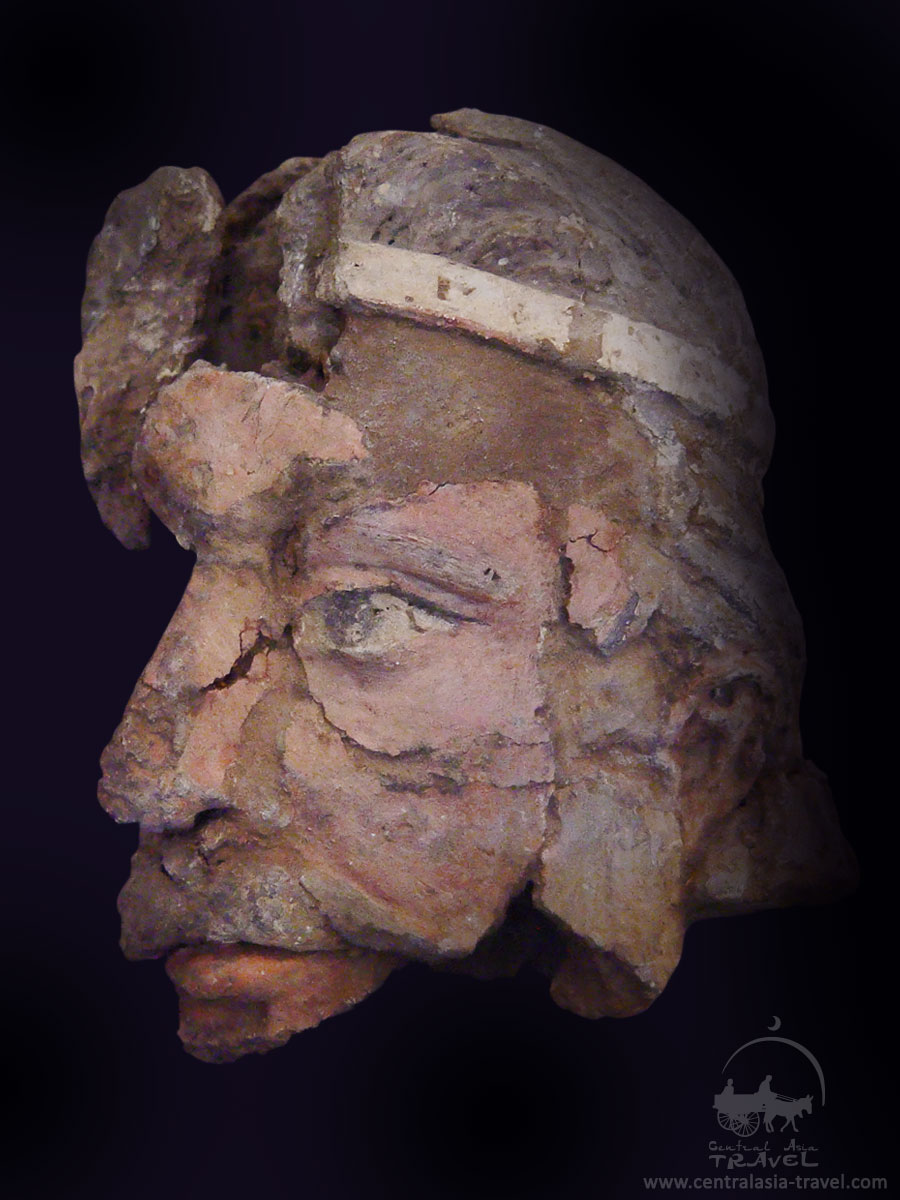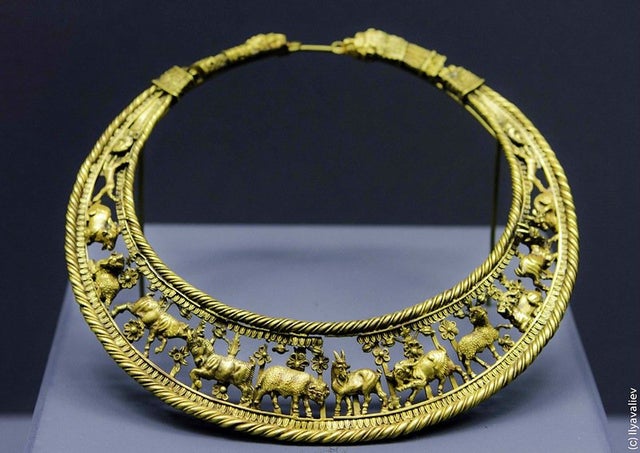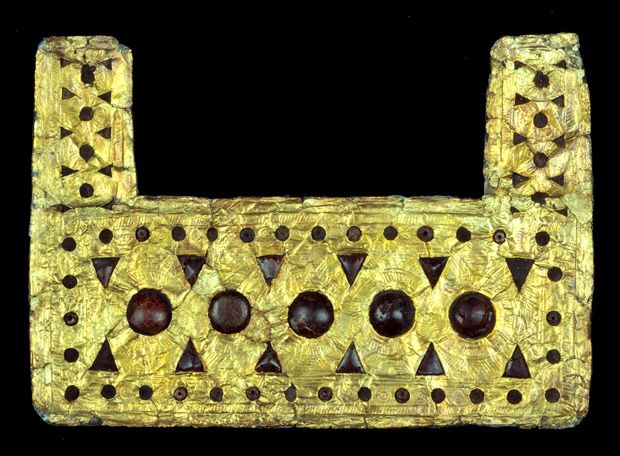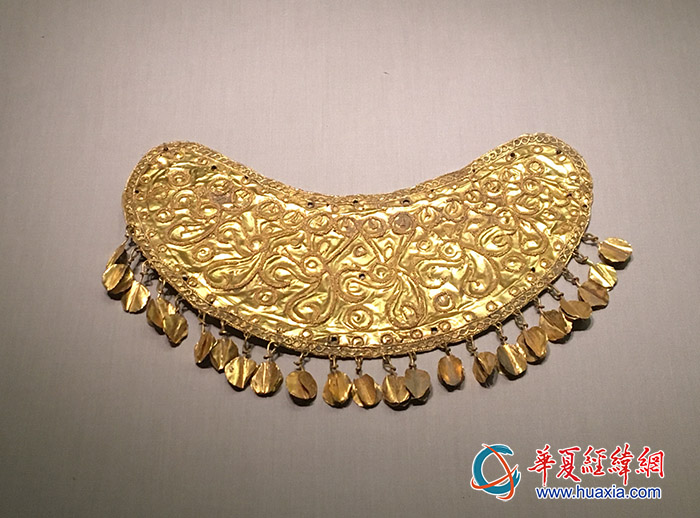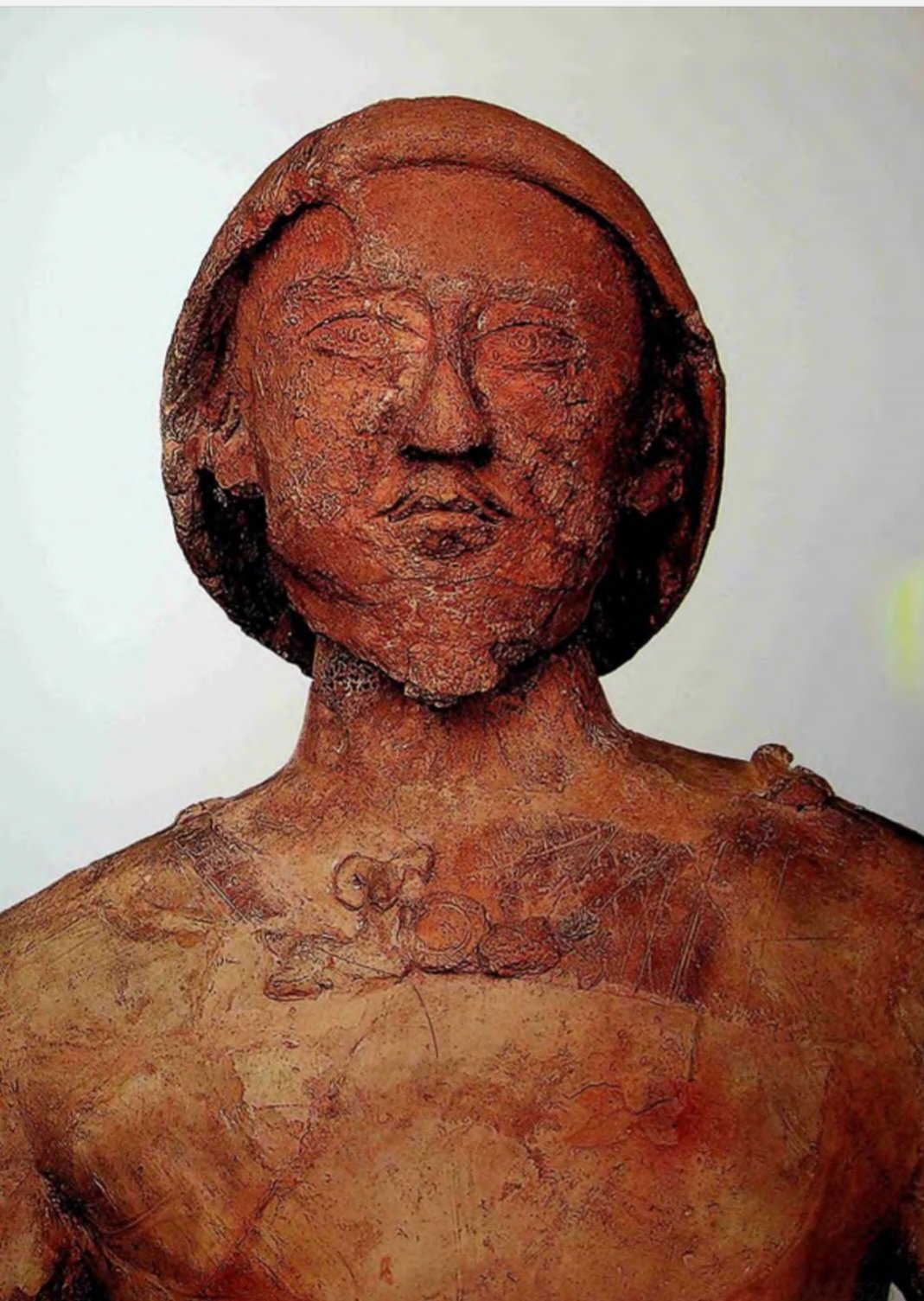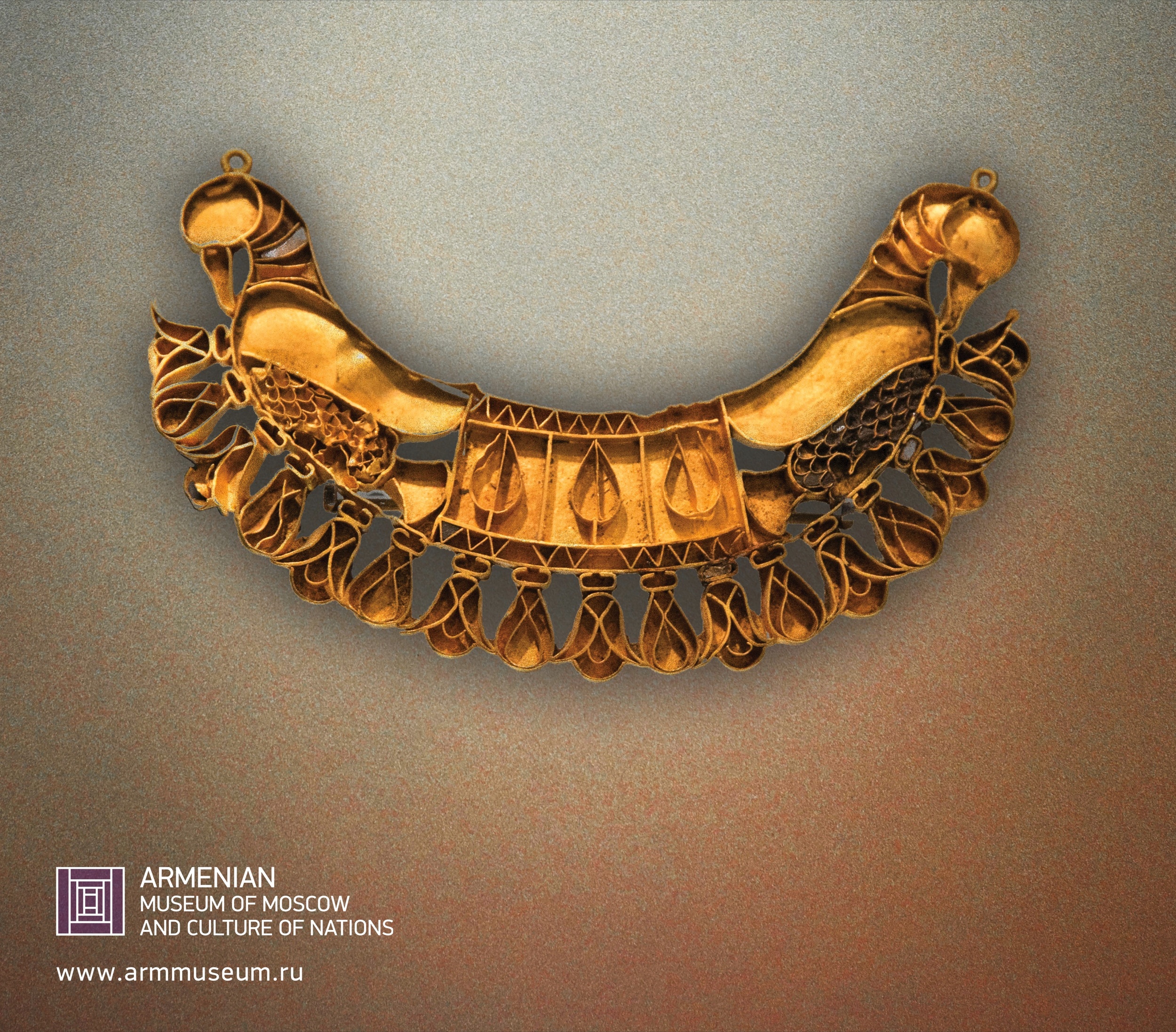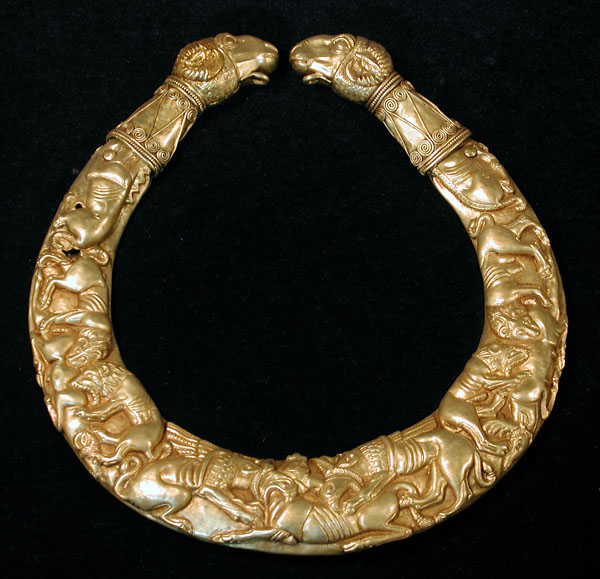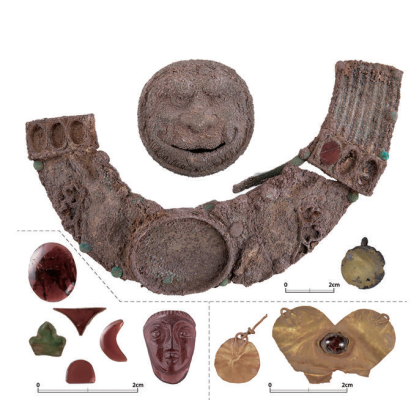
Silver pectoral inlaid with semiprecious stones [carnelian, turquoise?]. From the layer end of the 5th – beginning of the 6th century. Excavated from the Room 15/16, located in the center of the innermost part of Citadel.
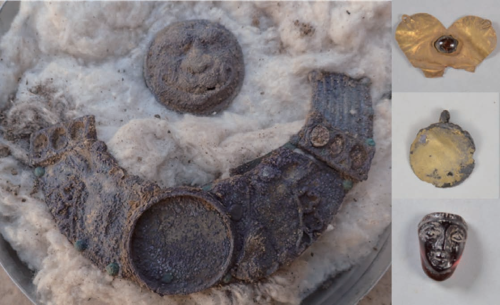
“The wooden panels have been discovered from the innermost central room (R 15/16) of the citadel of Kafir-kala.
All of the panels are carbonized and consist of one square wooden panel (about 130 × 114 cm), one wooden arch-shaped panel (about 300 × 55 cm, of which 156 × 55 cm are preserved), and several other pieces. The type of wood used for these panels is determined to be poplar.
The panels bear numerous small cracks across their surface. However, they did not break down in the soil due
to their carbonization and could survive to this day. The engraved patterns are almost completely preserved in
detail. On the square and arch-shaped panels, the goddess Nana and human figures bringing various offerings in
their hands to her have been depicted.” [CONSERVATION AND RESTORATION]
- New Discoveries from Kafir-kala: Coins, Sealings, and Wooden Carvings (introduction, and drawings of wooden carvings); Alisher Begmatov https://www.academia.edu
- Summary of Excavations at Kafir-Kala in Uzbekistan up to 2020 [Japanese]; MURAKAMI, Tomomi http://jswaa.org
- CONSERVATION AND RESTORATION OF WOOD CARVING UNEARTHED FROM KAFIR-KALA IN UZBEKISTAN, MURAKAMI, Tomomi
- Divine and Human Figures on the Sealings Unearthed from Kafir-kala. Japan Society for Hellenistic-Islam Archaeological Studies 24, 203-212 (2017); Alisher Begmatov https://www.academia.edu/

